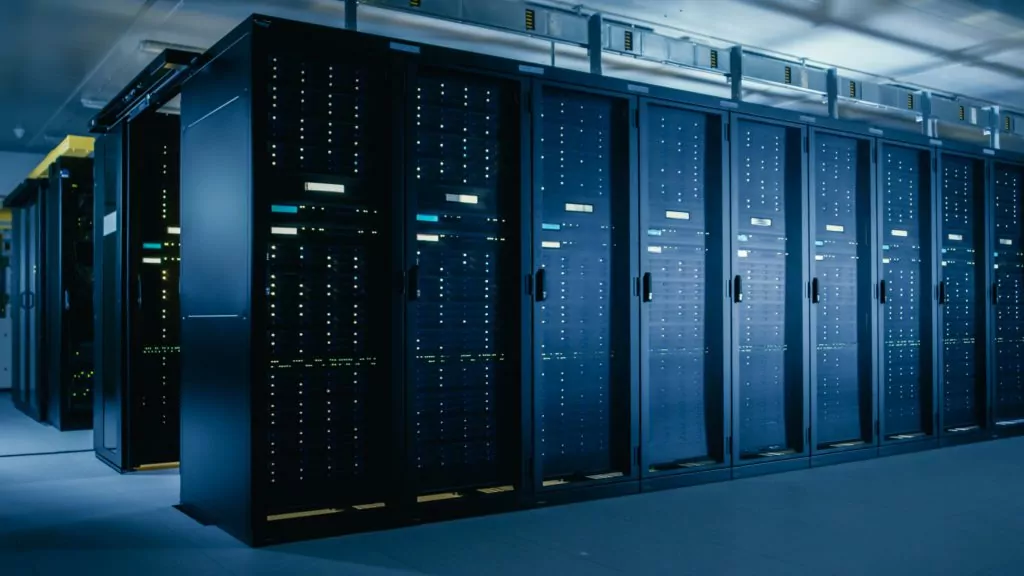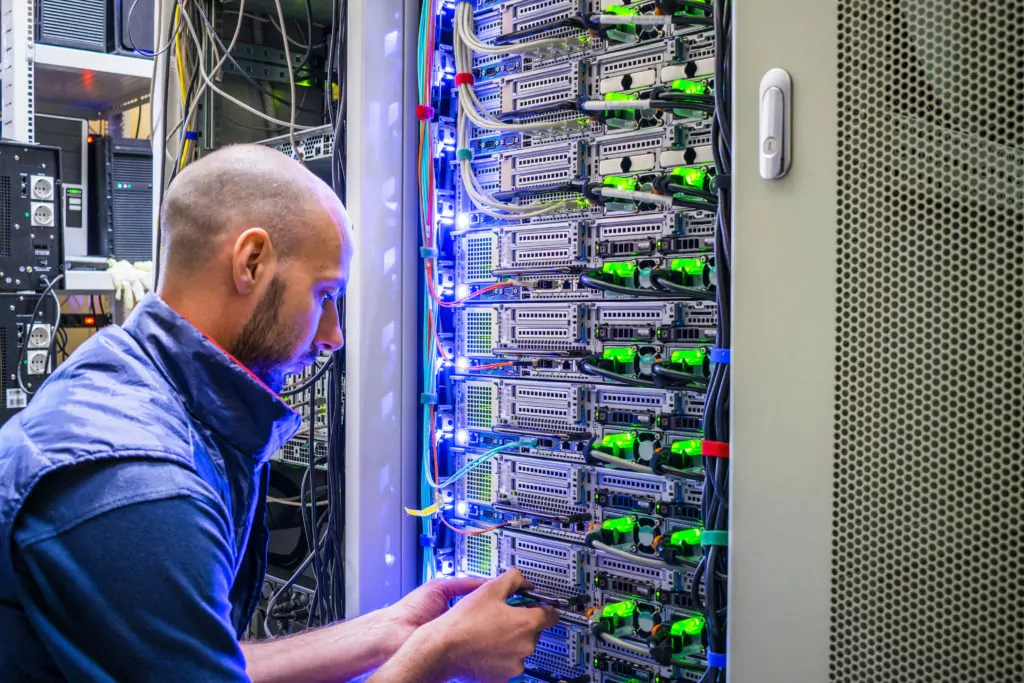Here’s where all the information on the internet is stored:
Data Centers are the source of almost all internet data. Their servers contain huge amounts of information we access on a daily basis.
The internet consists of a network of connected computer networks that communicates using TCP/IP protocols on a global scale.
So if you want to learn all about where the information on the internet is stored, then you’re in the right place.
Keep reading!

Where Is All the Information on the Internet Stored?
Every day we access the internet either through an app on our phone or a web browser on our computer. It is an essential part of our lives because it provides information of all sorts.
We seek information all the time.
Whether it’s a cooking recipe, a book, or some kind of research, we’ve come to expect that the internet contains data on our query—an answer to a question that we have at any point of the day.
To get to the information we are looking for, we have to go through the internet.
We need to access our web browser, mobile apps, go through different layers of computer networks, some security protocols, and finally arrive at the information we’re looking for.
But, where is that information stored exactly? And how does all of this work?
What Are the Workings of the Internet?
Every device connected to a router or hub has access to a network through Wi-Fi or a cable.
The network in question can be a local network or the internet.
A local network is a network of devices connected in one area. These can be internal networks for companies or networks that we have in our houses. The internal network can also be connected to the internet.
This is how it actually works:
The internet is one gigantic system of connected computer networks functioning on a global scale using the TCP/IP protocols to communicate. These protocols allow computer networks to send and receive data.
So when you decide to search for something online, these protocols help you reach your destination. They allow you to find the appropriate data from the right data center.
What Is the Role of Data Centers in Internet Data Storage?
A data center is an extensive grouped network of servers that contain large capacity hard drives.

Data centers are the source of almost all data on the internet. Their servers contain numerous pieces of information that we access daily.
So, why data center storage, why not cloud storage?
It’s basically the same thing:
Cloud storage is a more complex form of data center storage.
In other words, cloud storage refers to the public cloud of information stored across different data centers.
You don’t have to be an IT buff to understand how it works. If you want to download a game, it will come from a server in a data center.
You access it through the TCP/IP protocols, and the data starts getting transferred from that data center to your computer.
It’s the same for any kind of web access. We access social media that use data centers to store all resources you can see on the website or in the app.
Part of the information gets stored on your phone, in layman’s terms, the app itself. The other part refers to the information shown to you when you access the social media app.
So, yes, that picture of your cat sleeping on top of your friend’s head that you posted on Instagram last week—that’s likely stored on Instagram’s data centers.
And, when your followers see that image on their News Feed, they’re accessing that data center to get it.
It’s the same for your browser.
You access a website through your browser. All the information you can see on it is actually stored in a data center somewhere in the world.
The web server is a piece of hardware or software responsible for storing and delivering your device’s content.
What Is the Role of a Web Server in Internet Data Storage?
Servers are computers that provide some kind of service (hence the name “server”).
On the other hand, your device acts as a client. It requests a service from the server.
One server can serve multiple clients, and one client can access multiple servers through the internet.
Your computer can act as a server in your home’s network if you choose it. The other computers connected to it will have client roles.
So, what is a web server?
Web Server Hardware
When we speak about hardware, we speak about the physical aspect of technology.
The pieces that make up your computer are called hardware. These include the hard drive, the motherboard, the processor, the memory chips, etc.
From the hardware aspect, the webserver is a computer that stores all the components of a website.

Multiple JavaScript files, HTML documents, images, etc., are stored on it. Web servers are hardware connected to the internet that provides physical data that you see on your screen every time you’re online.
Web Server Software
Software is everything that makes your device’s hardware work.
Without software, you would just have a piece of metal, cables, and plastic that does nothing.
Software is the operating system on any device, smartphones, laptops, computers, and many more. It gives us control over the hardware.
From the software aspect, the webserver is like a claw crane. When we look for specific information on the internet, we use specific words, images, sounds, or other media types. We direct the claw to the toy we want to have.
We push enter (the button for lowering the claw), and it grabs the toy. The toy is then delivered to us through a little door on the side (which would be your phone screen).
In other words, the software web server is the app that gets the information that you need to your device.
Hardware web servers make up data centers, and software web servers make the internet function the way it does. By the way, here’s all about the main functions of the internet.
What Are the Types of Data Centers?
Now that we know what data centers are and that the information available on the internet actually comes from them, the only thing left to learn is their types.
There are 4 main types of data centers:
- Managed services data centers
- Enterprise (Hyperscale) data centers
- Colocation data centers
- Edge data centers
- Cloud data centers
Let’s learn more about each type:
Managed Services Data Centers
This type of data center is managed by a third party.
Small or large-scale business owners can hire a data center services provider. Typically, they manage the upkeep of the servers. This means that they manage the software and the hardware of the servers.
The operating systems are maintained, and the server’s downtime (when the connection is lost) is regulated by the third party.
The third-party provider also offers ways to expand storage capacity and patch the software with necessary fixes and updates.
Enterprise Data Centers
This is a data center that belongs to one organization, and it’s usually on its premises. Its only purpose is to support the organization that it belongs to.
The main advantage of this kind of data center is its security.
The data and the web servers are maintained by the organization that owns them.

The risks for information breaches are minimized.
Most corporations have their own enterprise data centers for security reasons.
Colocation Data Centers
Colocation data centers are large facilities that contain numerous servers with large capacities available for leasing. This type of data center is usually located in the industrial zone of the city or a suburb.
Unlike managed services data centers, these only provide all the necessary hardware:
- Servers
- Cooling systems
- Power
- Bandwidth
- And more
They are managed by the organization that leases them.
Edge Data Centers
These are data centers that are positioned close to the users they provide services for. Typically, they are run remotely, but they are mission-critical.
These data centers are deployed so that they leave a small footprint but provide a good service. Numerous sources are saying that this particular type of data center is the future.
Cloud Data Centers
We hear about “the cloud” all the time. Cloud computing is a relatively new concept.
The catch is that cloud data centers are still related to regular data centers. The only difference is that the information is accessed remotely.
E.g., an organization has its own data center on its premises, and this data center contains all the necessary hardware and software.
A cloud data center simply means that the data is distributed among multiple data centers and accessed through the internet when necessary.
The cloud still acts as one unit because it allows you to access its data and information through one threshold.
When you want to find a piece of information, you access the cloud. It collects physical parts of said information from secondary storage, i.e. other data centers.

